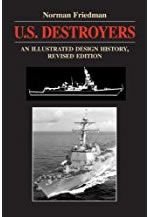USS Hale (DD-133)
|
|
USS Hale (DD-133) was a Wickes class destroyer that served with the US Neutrality Patrol before becoming HMS Caldwell and carrying out convoy escort duties for the Royal Navy and Royal Canadian Navy.
The Hale was named after Senator Eugene Hale, a politician who played a part in the birth of the 'New Navy', the modernisation of the US Navy that began in the early 1880s.
The Hale was launched at Bath, Maine, on 29 May 1919 and commissioned on 12 June 1919. She joined Destroyer Squadron 3 of the Atlantic Fleet, and on 11 July 1919 left the United States for European waters. After a series of goodwill visits to European and North Africa ports she moved to the Adriatic in October to help implement the terms of the Austro-Hungarian armistice, and then moved to Turkish waters. She was used to carry relief officials, freight and refugees between Greece, Bulgaria and Russia, before returning to the United States on 31 March 1920. After two years of peacetime operations off the East Coast she was decommissioned on 22 June 1922.
The Hale was recommissioned on 1 May 1930 and joined the Scouting Fleet, before moving to the West Coast to operate with the Battle Fleet in the spring of 1931. She took part in manoeuvres and helped development the techniques of carrier operations, before being placed back into the reserve on 9 April 1937. During this period she also served at the Naval Research Laboratory, where she was painted in one of a series of experimental camouflage schemes.
The Hale was recommissioned on 30 September 1939 and joined the neutrality patrol, initially in the Caribbean, from bases at Galveston and Key West. She was then chosen as one of the fifty destroyers to be given to Britain under the destroyers for bases deal, and on 6 September 1940 she arrived at Halifax, where on 9 September she transferred to the Royal Navy, becoming HMS Caldwell.
As HMS Caldwell
The Caldwell was used to escort convoys across the Atlantic, and then in the Caribbean. In mid-1942 she joined the Royal Canadian Navy for operations in the Atlantic. On 18 December 1942 she was so heavily damaged by a storm that she was disabled and was drifting helplessly when the Wanderer found her on 21 December. She had to be towed to St. John's for repairs, and then move to Boston for full repairs. She resumed operations with the RCN, but on 1 December 1943 she entered the reserve in the Tyne. She was sold for scrap on 23 February 1945.
Displacement (standard) |
1,160t (design) |
Displacement (loaded) |
|
Top Speed |
35kts (design) |
Engine |
2 shaft Parsons turbines |
Range |
3,800nm at 15kts on trial (Wickes) |
Armour - belt |
|
- deck |
|
Length |
314ft 4in |
Width |
30ft 11in |
Armaments (as built) |
Four 4in/50 guns |
Crew complement |
114 |
Launched |
29 May 1919 |
Commissioned |
12 June 1919 |
Sold for scrap |
23 February 1945 |
 U.S. Destroyers: An Illustrated Design History, Norman Friedmann .
The standard history of the development of American destroyers, from the earliest torpedo boat destroyers to the post-war fleet, and covering the massive classes of destroyers built for both World Wars. Gives the reader a good understanding of the debates that surrounded each class of destroyer and led to their individual features.
U.S. Destroyers: An Illustrated Design History, Norman Friedmann .
The standard history of the development of American destroyers, from the earliest torpedo boat destroyers to the post-war fleet, and covering the massive classes of destroyers built for both World Wars. Gives the reader a good understanding of the debates that surrounded each class of destroyer and led to their individual features.